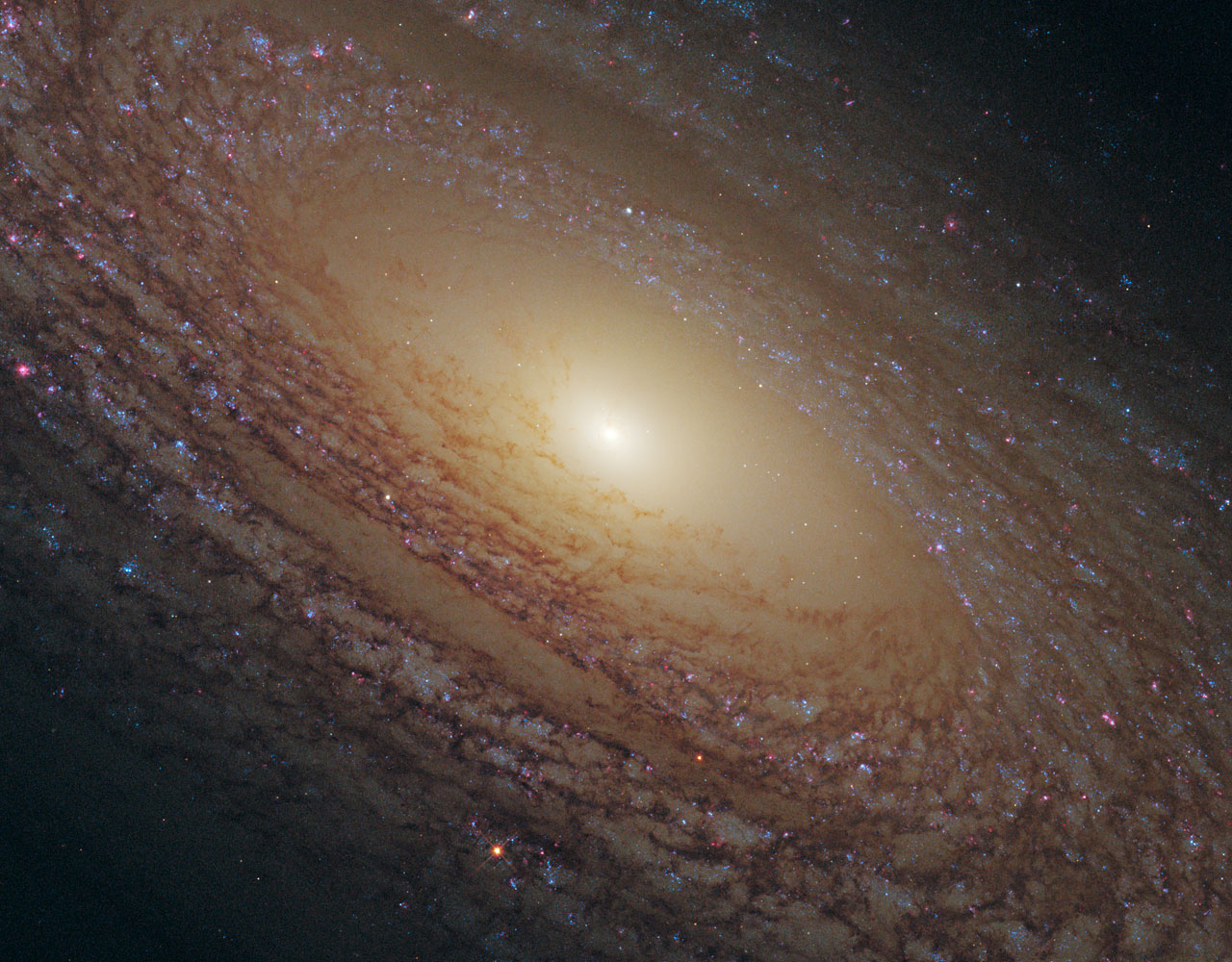New Hubble Photo Shows Spiral Galaxy's Glowing Newborn Stars

A stunning new photo from the Hubble Space Telescope shows newborn stars studding a galaxy like bright blue jewels.
The spiral galaxy, called NGC 2841, lies in the constellation Ursa Major, about 46 million light-years from Earth. Hubble's newest instrument, the Wide Field Camera 3 (WFC3), took the photo, in which newborn stars show up as bright blue clumps.
While the image shows lots of hot, young stars in NGC 2841's disk, there are just a few sites where hydrogen gas is currently collapsing into new stars, researchers said. It is likely that these fiery youngsters destroyed the star-forming regions in which they formed.
The photo of NGC 2841 is part of a new study to better understand and characterize star formation throughout the universe, researchers said. Scientists are observing a variety of different stellar nursery environments to try to answer some key questions.
Astronomers don’t understand, for example, how the properties of stellar nurseries vary according to the composition and density of the gas that is present. They're also not sure what triggers star formation in the first place, researchers said.
The driving force behind star formation is particularly unclear for a type of galaxy called a flocculent spiral, which is characterized by short spiral arms rather than prominent and well-defined galactic limbs. NGC 2841 is such a galaxy.
An international team of astronomers is using the WFC3 instrument to study a sample of nearby — but substantially different — star-forming regions. The observational targets include both star clusters and galaxies, researchers said, and star-birthing rates range from the baby-booming starburst galaxy Messier 82 to the much less active NGC 2841.
Get the Space.com Newsletter
Breaking space news, the latest updates on rocket launches, skywatching events and more!
WFC3 was installed on Hubble in May 2009. The instrument is well suited to carry out the new study, researchers said, as the camera is optimized to observe the ultraviolet radiation emitted by newborn stars. It also sees well at infrared wavelengths, so it can peer behind the veil of dust that would otherwise hide the youngsters from view.
Hubble, a joint effort of NASA and the European Space Agency, launched in April 1990. The telescope has been repaired five times over its long life, and it's expected to keep going strong until at least 2014.
Join our Space Forums to keep talking space on the latest missions, night sky and more! And if you have a news tip, correction or comment, let us know at: community@space.com.

Space.com is the premier source of space exploration, innovation and astronomy news, chronicling (and celebrating) humanity's ongoing expansion across the final frontier. Originally founded in 1999, Space.com is, and always has been, the passion of writers and editors who are space fans and also trained journalists. Our current news team consists of Editor-in-Chief Tariq Malik; Editor Hanneke Weitering, Senior Space Writer Mike Wall; Senior Writer Meghan Bartels; Senior Writer Chelsea Gohd, Senior Writer Tereza Pultarova and Staff Writer Alexander Cox, focusing on e-commerce. Senior Producer Steve Spaleta oversees our space videos, with Diana Whitcroft as our Social Media Editor.









